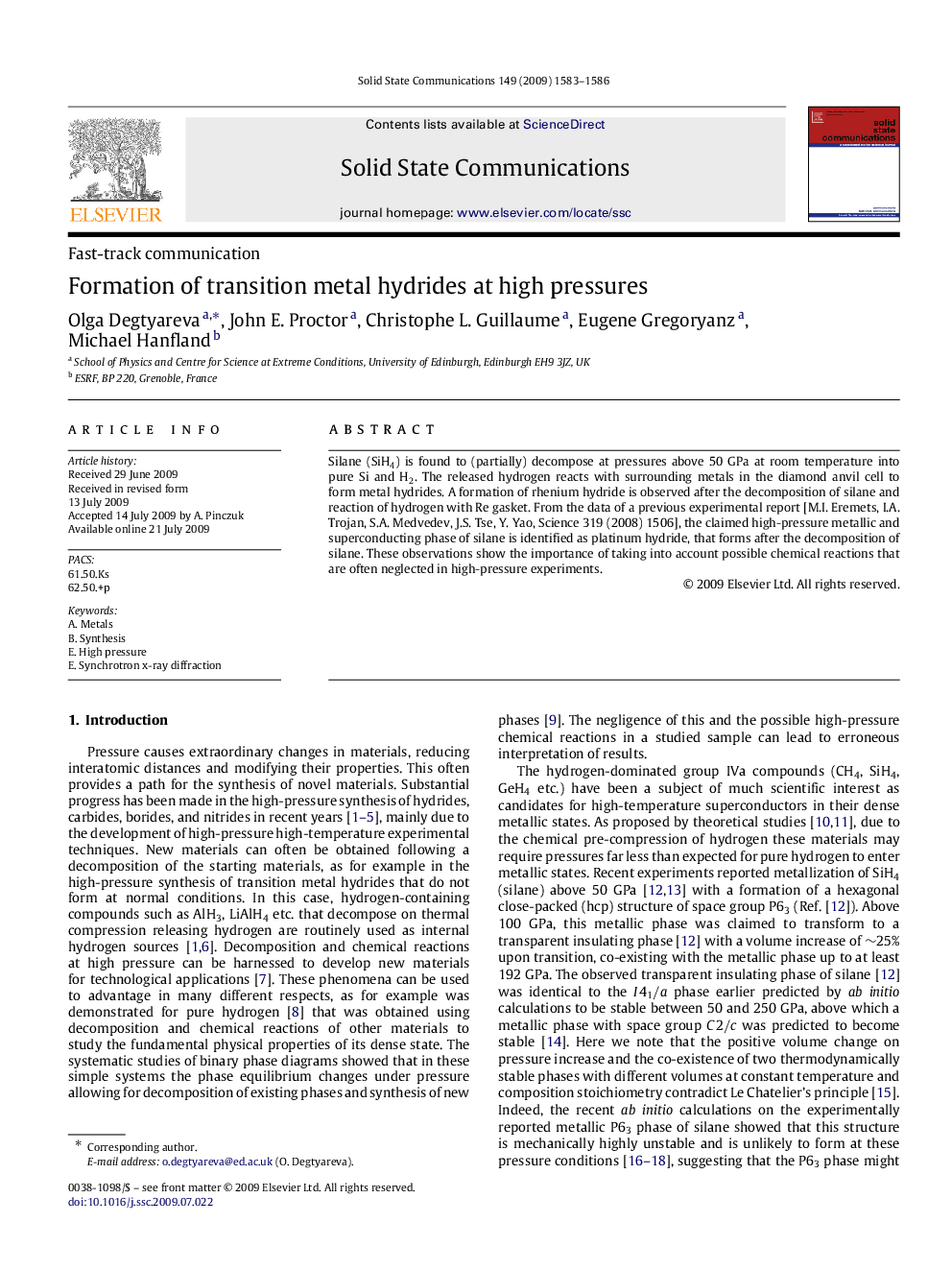| Article ID | Journal | Published Year | Pages | File Type |
|---|---|---|---|---|
| 1594448 | Solid State Communications | 2009 | 4 Pages |
Silane (SiH4) is found to (partially) decompose at pressures above 50 GPa at room temperature into pure Si and H2. The released hydrogen reacts with surrounding metals in the diamond anvil cell to form metal hydrides. A formation of rhenium hydride is observed after the decomposition of silane and reaction of hydrogen with Re gasket. From the data of a previous experimental report [M.I. Eremets, I.A. Trojan, S.A. Medvedev, J.S. Tse, Y. Yao, Science 319 (2008) 1506], the claimed high-pressure metallic and superconducting phase of silane is identified as platinum hydride, that forms after the decomposition of silane. These observations show the importance of taking into account possible chemical reactions that are often neglected in high-pressure experiments.
